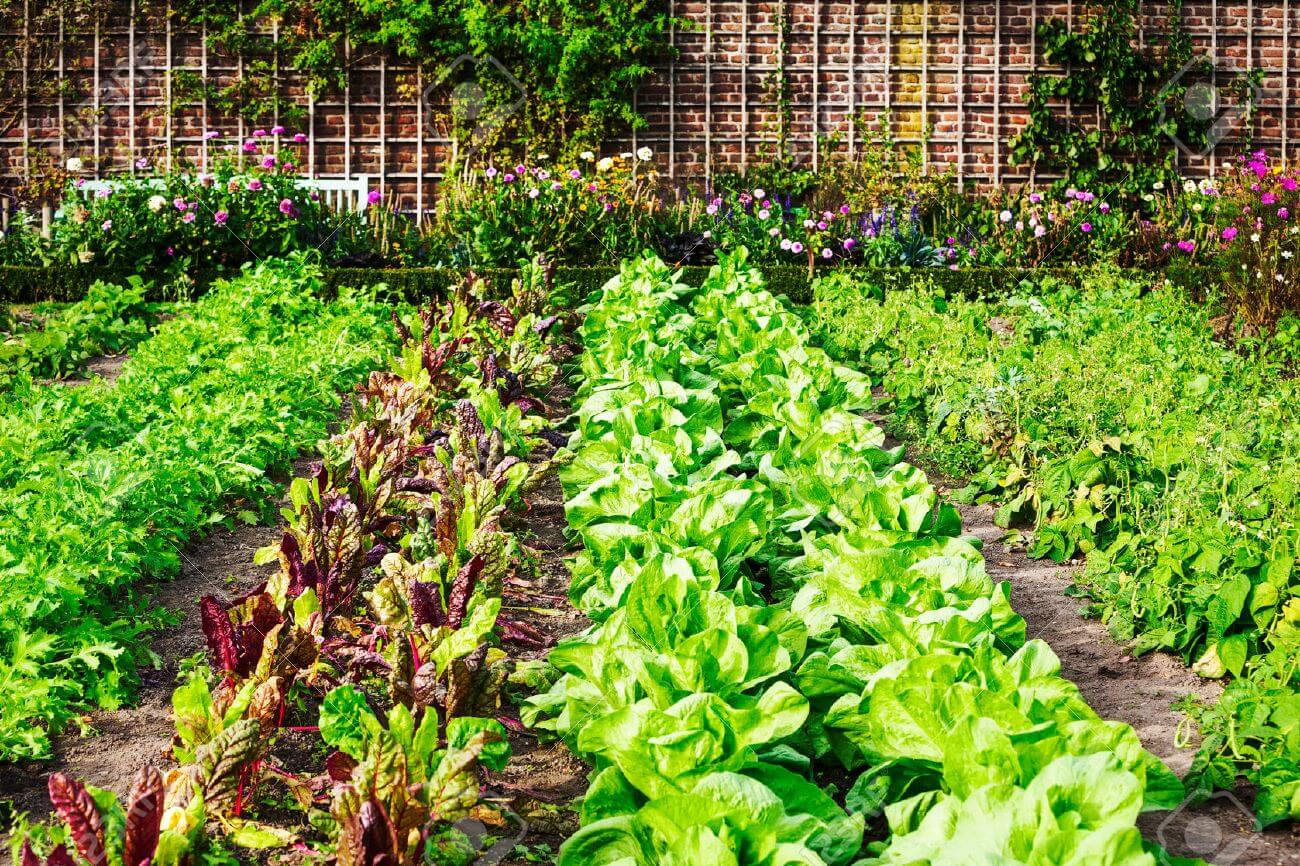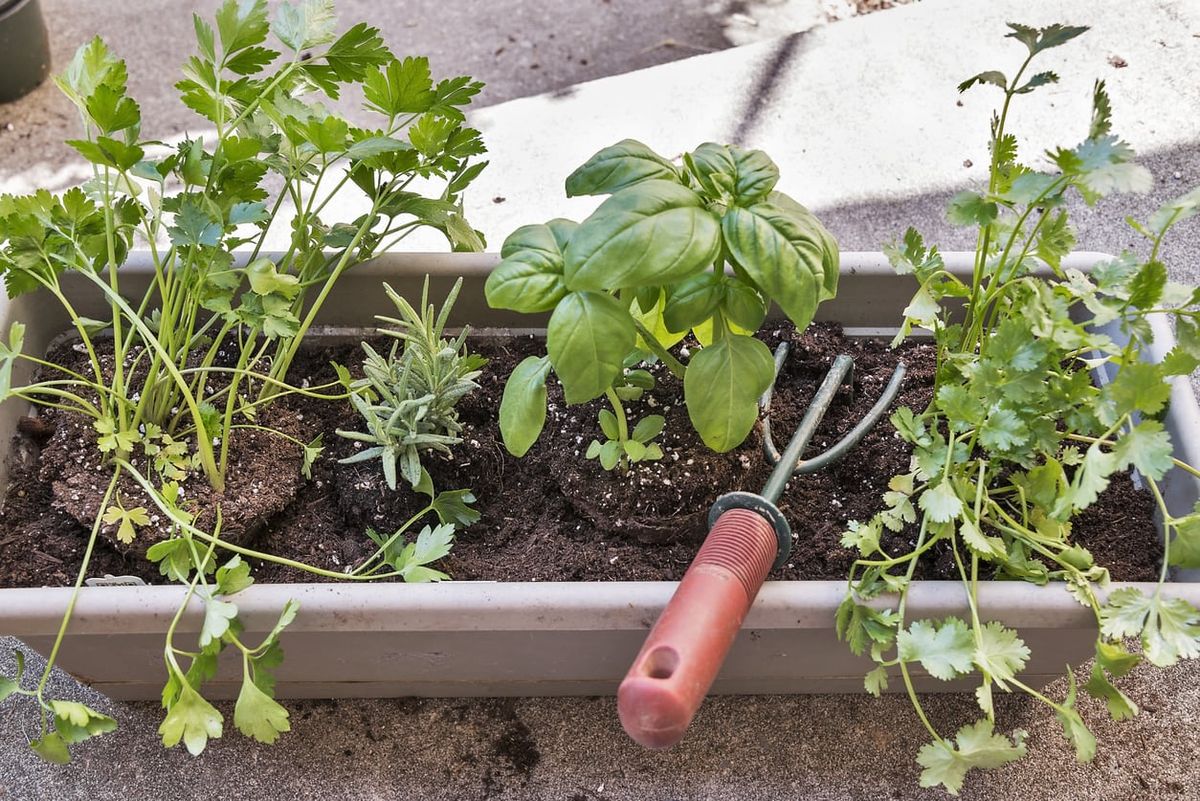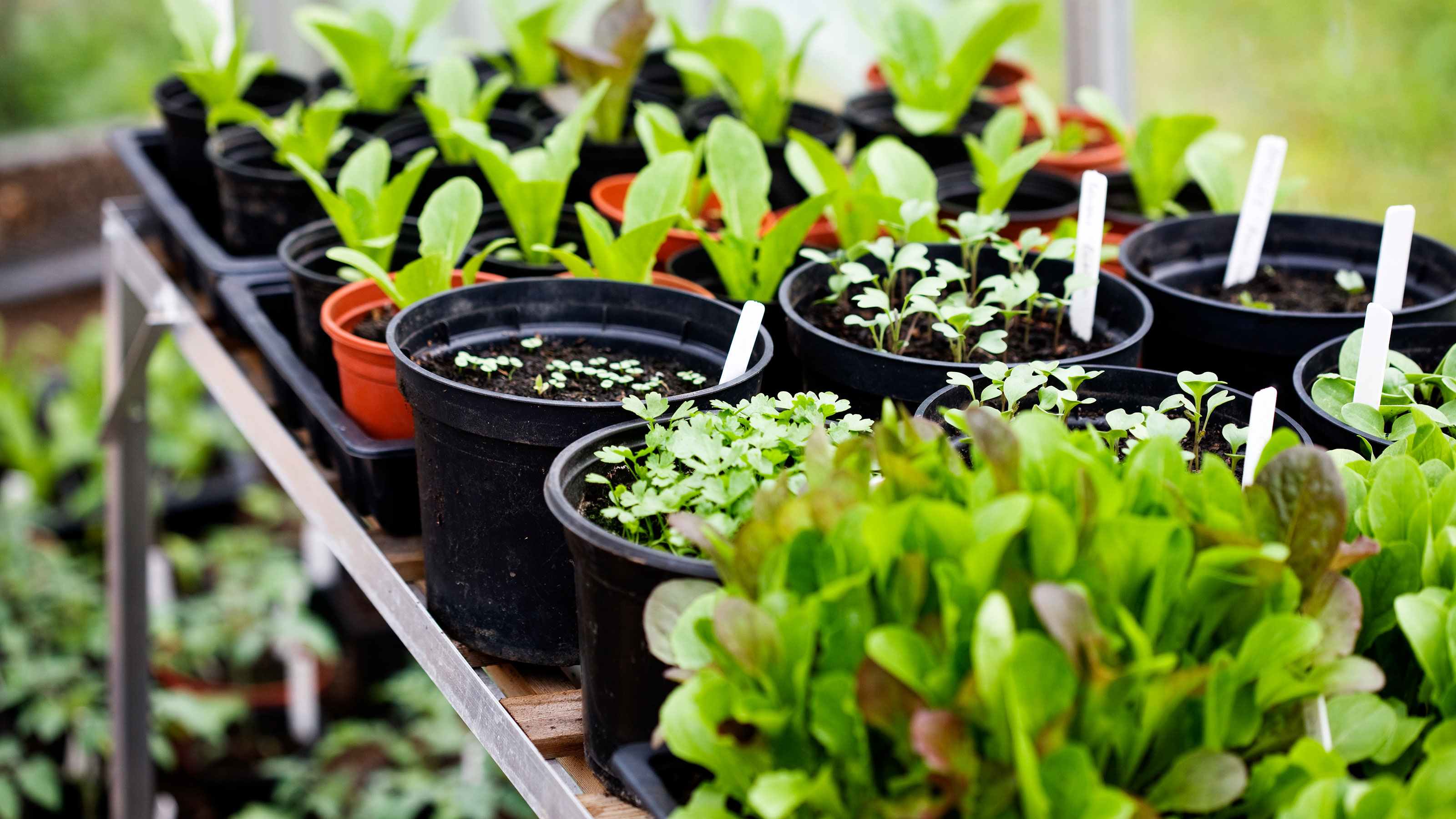Home>Gardening Basics>Understanding Soil>What Vegetables Can I Plant Now In Texas


Understanding Soil
What Vegetables Can I Plant Now In Texas
Modified: January 22, 2024
Discover which vegetables are ideal to plant in Texas right now and gain a better understanding of soil requirements for successful gardening in the Lone Star State.
(Many of the links in this article redirect to a specific reviewed product. Your purchase of these products through affiliate links helps to generate commission for Chicagolandgardening.com, at no extra cost. Learn more)
Table of Contents
Introduction
Are you eager to start your own vegetable garden in Texas but unsure of what vegetables to plant? Well, you’re in luck! Texas offers a favorable climate for growing a wide array of vegetables throughout the year. Whether you have a sprawling backyard or just a small patio, you can take advantage of the abundant sunshine and mild winters to cultivate a bountiful harvest.
While the best time to plant vegetables in Texas may vary depending on the region you live in, many vegetables can be planted now, regardless of your location. By choosing the right vegetables, you can enjoy a fresh and delicious harvest in the coming months.
In this article, we will explore the top 10 vegetables that you can plant now in Texas. From juicy tomatoes to crisp cucumbers, these vegetables are not only easy to grow but also highly rewarding. Whether you are a seasoned gardener or a beginner, there is something for everyone to enjoy.
Before we dive into the specifics of each vegetable, it’s important to note that successful gardening in Texas requires some planning and preparation. Understanding the climate, soil conditions, and planting schedules is crucial for optimal growth. By following some simple tips and tricks, you can set yourself up for a successful and thriving garden.
So, let’s get our hands dirty and explore the wonderful world of vegetable gardening in Texas. Get ready to unleash your green thumb and enjoy the satisfaction of growing your own food!
Best Vegetables to Plant Now in Texas
When it comes to planting vegetables in Texas, it’s important to choose varieties that are well-suited to the state’s climate and growing conditions. Here are the top 10 vegetables that you can plant now in Texas:
- Tomatoes: Texas is known for its delicious, ripe tomatoes. Start with transplants and choose varieties like Beefsteak, Roma, or Cherry tomatoes for a juicy and flavorful harvest.
- Peppers: Bell peppers, jalapenos, and serranos thrive in the Texas heat. These vibrant and versatile vegetables can be used in a variety of dishes, adding color and a hint of spice.
- Cucumbers: With their refreshing crunch, cucumbers are perfect for salads and pickling. Plant varieties like Straight Eight or Marketmore for a plentiful yield.
- Squash: Zucchini and yellow squash are prolific growers in Texas. Their tender flesh can be sautéed, roasted, or grilled for a delicious side dish.
- Green Beans: Both bush and pole beans thrive in the Texas heat. Harvest young, tender beans for a nutritious addition to your meals.
- Okra: A staple in Southern cuisine, okra loves the hot and humid Texas weather. Enjoy it breaded and fried, or add it to stews and gumbo for a touch of Southern flavor.
- Eggplant: Eggplants flourish in Texas gardens. Choose varieties like Black Beauty or Graffiti for their glossy skin and rich flavor.
- Sweet Potatoes: These starchy and nutritious tubers love the warm Texas soil. Plant them now for a sweet and satisfying harvest in the fall.
- Zucchini: This versatile vegetable grows quickly and abundantly. Grate it into fritters, spiralize it into noodles, or bake it into delicious bread.
- Watermelon: No summer garden is complete without juicy watermelons. Choose from a variety of sweet and refreshing varieties, like Crimson Sweet or Sugar Baby.
These vegetables are not only delicious but also relatively easy to grow in Texas. They can tolerate the heat and humidity, making them perfect for the state’s climate. Whether you have a large garden or just a few pots, you can enjoy a bountiful harvest of fresh and flavorful produce.
Now that you know the best vegetables to plant in Texas, let’s explore some tips to ensure a successful planting experience.
Tomatoes
Tomatoes are a staple in many home gardens, and for good reason. They are versatile, delicious, and relatively easy to grow in Texas. These vibrant red fruits can be enjoyed fresh in salads, made into sauces, or used in a variety of culinary creations. Here are some tips for successfully growing tomatoes in Texas:
- Choose the Right Varieties: When selecting tomato varieties, consider the size, flavor, and disease resistance. Beefsteak tomatoes are well-known for their large size and juicy flesh, while Roma tomatoes are excellent for sauces and canning. Cherry tomatoes are perfect for snacking and adding bursts of flavor in salads.
- Start with Transplants: To get a head start on the growing season, begin with transplants rather than starting from seeds. Transplants are young tomato plants that have been started in a nursery and are ready to be planted in the ground. Look for sturdy plants with healthy foliage.
- Provide Ample Sunlight: Tomatoes thrive in full sunlight, so ensure they receive at least 6 to 8 hours of direct sunlight each day. Choose a sunny spot in your garden or patio for optimal growth and fruit production.
- Prepare the Soil: Tomatoes prefer well-draining soil that is rich in organic matter. Before planting, amend the soil with compost or well-rotted manure to improve fertility and drainage. This will provide the plants with the necessary nutrients for healthy growth.
- Water Consistently: Tomatoes require regular watering to stay hydrated and produce juicy fruits. Water deeply and consistently, aiming to keep the soil evenly moist. Avoid overhead watering, as wet foliage can lead to fungal diseases. Instead, water at the base of the plants.
- Support the Plants: Most tomato varieties benefit from support to keep the fruits off the ground and prevent diseases. Use cages, stakes, or trellises to provide support and train the plants as they grow. This will also help with air circulation and sunlight penetration.
- Monitor for Pests and Diseases: Keep an eye out for common tomato pests like aphids, whiteflies, and hornworms. Treat infestations early with organic pest control methods to prevent damage to the plants. Additionally, be vigilant for signs of diseases such as blight or wilt, and promptly remove and dispose of affected plants to prevent the spread.
- Harvest at the Right Time: Tomatoes are ready to be harvested when they have reached their full color and are slightly firm to the touch. Avoid leaving them on the vine for too long, as overripe tomatoes can split or become susceptible to pests and diseases.
By following these tips, you can enjoy a bumper crop of flavorful tomatoes in your Texas garden. Whether you choose to slice them for sandwiches, roast them for sauces, or simply savor them fresh off the vine, tomatoes will add a pop of color and taste to your dishes.
Now that you know how to grow tomatoes, let’s move on to the next vegetable in our list: peppers.
Peppers
Peppers are a fantastic addition to any vegetable garden in Texas. They come in a variety of shapes, sizes, and heat levels, allowing you to customize your dishes to your preferred taste. From mild bell peppers to spicy jalapenos, peppers are a versatile vegetable that can be used in salads, stir-fries, salsas, and more. Here are some tips for growing peppers successfully in Texas:
- Choose the Right Varieties: Peppers come in various shapes and heat levels, so choose the varieties that suit your taste preferences. Bell peppers are mild and sweet, while jalapenos provide a medium-spice kick. If you’re feeling adventurous, try growing habaneros for a fiery flavor.
- Start with Transplants: For a head start on the growing season, begin with transplants rather than starting from seeds. Transplants are readily available at nurseries and garden centers. Look for plants with sturdy stems and healthy leaves.
- Select a Sunny Location: Peppers thrive in full sunlight, so choose a spot in your garden or patio that receives at least 6 to 8 hours of direct sunlight each day. Adequate sunlight is essential for the plants to produce abundant fruits.
- Prepare the Soil: Peppers prefer well-draining soil that is rich in organic matter. Amend the soil with compost or well-rotted manure to improve its fertility and drainage. This will provide the plants with the necessary nutrients for healthy growth.
- Water Consistently: Peppers require regular watering to ensure proper growth and fruit development. Water deeply and evenly, aiming to keep the soil consistently moist. However, avoid overwatering, as it can lead to root rot.
- Provide Support if Needed: While some pepper plants may not require support, larger varieties or those loaded with fruits may benefit from stakes or cages. This will prevent the plants from toppling over due to the weight of the peppers and minimize the risk of diseases caused by direct contact with the soil.
- Monitor for Pests and Diseases: Keep an eye out for common pests that can affect peppers, such as aphids, whiteflies, and pepper maggots. If necessary, apply organic pest control measures to prevent infestations. Also, watch for signs of diseases like bacterial spot or powdery mildew and take prompt action to minimize their impact.
- Harvest at the Right Time: Peppers can be harvested at various stages of maturity, depending on your preference. For bell peppers, wait until they have reached their full color and have a firm texture. For spicier varieties, like jalapenos, you can harvest them while they are still green or allow them to fully ripen and turn red, depending on the desired heat level.
By following these tips, you can grow a bountiful harvest of peppers that will add flavor and variety to your culinary creations. From mild and sweet to hot and spicy, peppers are a versatile vegetable that can elevate any dish.
Now that you’re well-equipped with the knowledge of growing peppers, let’s move on to the next vegetable on our list: cucumbers.
Cucumbers
Cucumbers are a refreshing and versatile vegetable that thrives in the warm Texas climate. Whether you enjoy them fresh in salads, pickled, or added to sandwiches, growing your own cucumbers allows you to savor their crisp texture and delicate flavor at its peak. Here are some tips for successfully growing cucumbers in Texas:
- Choose the Right Varieties: There are two main types of cucumbers: slicing cucumbers and pickling cucumbers. Slicing cucumbers, like the Straight Eight variety, are larger and perfect for fresh consumption. Pickling cucumbers, such as the National Pickling variety, have a compact size and are ideal for preserving in vinegar or brine.
- Start with Transplants or Seeds: Cucumbers can be grown from transplants or seeds. Transplants provide a head start, giving you a quicker harvest. Alternatively, you can sow cucumber seeds directly in the garden once the soil has warmed up to at least 60°F (15.5°C).
- Provide Full Sunlight: Cucumbers thrive in full sunlight, so ensure they receive at least 6 to 8 hours of direct sunlight each day. Choose a location in your garden or patio where they can bask in the warmth of the sun.
- Prepare the Soil: Cucumbers prefer well-draining soil that is rich in organic matter. Before planting, amend the soil with compost or well-rotted manure to improve its fertility and drainage. This will provide the plants with the necessary nutrients to support healthy growth.
- Water Consistently: Cucumbers require consistent moisture to prevent bitterness and maintain their crisp texture. Water deeply and evenly, ensuring that the soil is consistently moist. Mulching around the plants can help retain moisture and suppress weeds.
- Use Supports: Cucumbers are climbers and benefit from trellises, cages, or stakes for support. Growing them vertically not only saves space but also keeps the fruits off the ground, reducing the risk of rot or pest damage.
- Protect from Pests and Diseases: Keep an eye out for common cucumber pests like cucumber beetles and aphids. If necessary, use organic pest control methods to protect your plants. Regularly inspect the foliage for any signs of diseases such as powdery mildew and take action early to prevent the spread.
- Harvest at the Right Time: Cucumbers can be harvested when they have reached their desired size. Slicing cucumbers are typically ready when they are 6-8 inches long, while pickling cucumbers are harvested at a smaller size, around 3-4 inches. Pick them regularly to encourage continuous production.
By following these tips, you can enjoy a plentiful harvest of fresh cucumbers right from your own garden. Whether you enjoy them in salads, pickles, or refreshing cucumber water, homegrown cucumbers offer superior flavor and quality.
Now that you have mastered the art of growing cucumbers, it’s time to move on to the next vegetable on our list: squash.
Squash
Squash is a versatile vegetable that thrives in the warm climate of Texas. With its vibrant colors and rich flavors, squash can add a delightful touch to a variety of dishes. From zucchini to yellow squash, growing your own squash allows you to enjoy their tender flesh and abundant harvest. Here are some tips for successfully growing squash in Texas:
- Choose the Right Varieties: There are various types of squash to choose from, including zucchini, yellow squash, and pattypan squash. Consider the size, shape, and flavor of the squash when selecting the varieties that best suit your culinary preferences.
- Direct Sow or Start with Transplants: Squash can be started from seeds or transplants. If you choose to start from seeds, sow them directly in the garden once the soil has warmed up. Alternatively, you can purchase transplants that are ready to be planted in the ground.
- Provide Full Sunlight: Squash plants thrive in full sunlight, so choose a location in your garden that receives at least 6 to 8 hours of direct sunlight every day. Adequate sunlight is crucial for the plants to grow and produce a bountiful harvest.
- Prepare the Soil: Squash prefers well-draining soil that is rich in organic matter. Before planting, amend the soil with compost or well-rotted manure to improve its fertility and drainage. This will provide the plants with the necessary nutrients to support healthy growth.
- Water Consistently: Squash plants require regular watering to ensure continuous growth and fruit production. Water deeply, providing enough moisture to keep the soil consistently moist. Avoid overwatering, as it can lead to root rot.
- Watch for Pests and Diseases: Squash plants are susceptible to pests such as squash bugs, vine borers, and cucumber beetles. Monitor your plants regularly and take action at the first sign of infestation. Applying organic pest control measures can help protect your plants from damage. Also, be on the lookout for diseases like powdery mildew and treat them promptly to prevent their spread.
- Harvest at the Right Time: Squash should be harvested when the fruits are young and tender for the best flavor and texture. For zucchini and yellow squash, harvest them when they are around 6-8 inches in length. Regular harvesting encourages the plants to produce more fruit.
- Rotate Planting Locations: To prevent disease buildup and maintain soil fertility, rotate the location where you plant squash each year. This helps break the pest and disease cycle and promotes overall plant health.
By following these tips, you can enjoy a plentiful harvest of delicious and nutritious squash from your Texas garden. Whether you dice them into stir-fries, roast them as a side dish, or incorporate them into your favorite recipes, homegrown squash adds a delightful touch of freshness to your meals.
Now that you’ve mastered growing squash, let’s move on to the next vegetable on our list: green beans.
Green Beans
Green beans, also known as snap beans or string beans, are a versatile and nutritious vegetable that can be enjoyed in a variety of dishes. Their crisp texture and vibrant color make them a popular choice for home gardens in Texas. Whether you prefer them steamed, stir-fried, or added to soups and stews, growing your own green beans allows you to enjoy their flavor at its freshest. Here are some tips for successfully growing green beans in Texas:
- Choose the Right Variety: There are two main types of green beans: bush beans and pole beans. Bush beans are compact and do not require support, making them ideal for smaller gardens or containers. Pole beans, on the other hand, are vining and need trellises or supports to climb. Choose the variety that best suits your gardening space and needs.
- Direct Sow the Seeds: Green beans are typically grown from seeds. Sow the seeds directly in the garden once the soil has warmed up to around 60°F (15.5°C) or higher. Plant the seeds about 1 inch deep and 3 inches apart, with rows spaced around 18 inches apart for bush beans and 36 inches apart for pole beans.
- Provide Full Sunlight: Green beans thrive in full sunlight. Ensure that the plants receive at least 6 to 8 hours of direct sunlight each day. Choose a sunny spot in your garden that provides optimal growing conditions for the beans.
- Prepare the Soil: Green beans prefer well-draining soil that is rich in organic matter. Before planting, amend the soil with compost or well-rotted manure to improve its fertility and drainage. This will provide the plants with the necessary nutrients for healthy growth and abundant bean production.
- Water Consistently: Green beans require consistent moisture to thrive. Water the plants deeply and evenly, ensuring that the soil remains consistently moist. Avoid overwatering, as it can lead to root rot. Mulching around the plants can help retain moisture and suppress weeds.
- Provide Support for Pole Beans: If you are growing pole beans, provide support such as trellises, stakes, or bean poles for the vines to climb. This helps in maximizing space, improving air circulation, and making it easier to harvest the beans. Train the vines to climb the support as they grow.
- Watch for Pests and Diseases: Common pests that can affect green beans include aphids, bean beetles, and spider mites. Monitor your plants for any signs of infestation and take appropriate measures to control the pests. Also, be on the lookout for diseases such as powdery mildew or rust, and treat them promptly to prevent their spread.
- Harvest at the Right Time: Green beans are typically ready for harvest around 50 to 60 days after planting. Harvest the beans when they reach the desired size, usually around 4 to 6 inches long and before the seeds become too developed. Regular harvesting encourages the plants to continue producing more beans.
By following these tips, you can grow a bountiful harvest of fresh and flavorful green beans in your Texas garden. Whether you enjoy them as a side dish, add them to salads, or incorporate them into your favorite recipes, homegrown green beans offer superior taste and quality.
Now that you’ve learned how to grow green beans, let’s move on to the next vegetable on our list: okra.
Okra
Okra is a popular vegetable in Southern cuisine and grows exceptionally well in the hot and humid climate of Texas. Known for its distinctive shape and unique texture, okra pods are commonly used in stews, gumbos, and fried dishes. If you’re looking to grow your own okra in Texas, here are some tips to help you cultivate a successful crop:
- Choose the Right Variety: Okra comes in different varieties, such as Clemson Spineless or Emerald. Consider the size of the plants, the flavor of the pods, and the days to maturity when selecting the perfect okra variety for your garden.
- Sow the Seeds: Okra seeds can be directly sown in the garden once the soil has warmed up to around 65°F (18°C) or higher. Plant the seeds about 1 inch deep and space them around 12 to 18 inches apart. Thin the seedlings if necessary, leaving the strongest plants with enough room to grow.
- Provide Full Sunlight: Okra thrives in full sunlight, so make sure to choose a location in your garden that receives at least 6 to 8 hours of direct sunlight each day. The more sunlight the plants receive, the better their growth and fruit production.
- Prepare the Soil: Okra prefers well-draining soil with a pH level around 6.0 to 6.8. Before planting, amend the soil with organic matter, such as compost or well-rotted manure, to enhance its fertility and drainage. This will provide the plants with the necessary nutrients for vigorous growth.
- Water Regularly: Okra plants need regular watering, especially during dry periods. Water deeply, ensuring that the soil is evenly moist. However, be cautious not to overwater, as excessive moisture can cause root rot. Mulching around the plants can help retain moisture and suppress weed growth.
- Support the Plants: Although okra plants are generally sturdy, providing support such as stakes or cages can help them withstand strong winds and heavy rains. Additionally, supporting the plants can keep the pods off the ground, reducing the risk of rot or pest damage.
- Monitor for Pests and Diseases: Keep an eye out for common okra pests, including aphids, flea beetles, and stink bugs. Regularly inspect the plants for any signs of infestation and take appropriate measures to control the pests. It’s also important to watch for diseases like okra mosaic virus or powdery mildew and take prompt action to prevent their spread.
- Harvest at the Right Time: Okra pods should be harvested when they are around 2 to 4 inches long, as larger pods tend to become tough and fibrous. Use a pair of sharp garden shears or a knife to cut the pods from the stem. Harvesting regularly encourages the plants to continue producing more pods.
By following these tips, you can enjoy a plentiful harvest of fresh and tender okra in your Texas garden. Whether you add it to gumbo, sauté it with spices, or bread and fry it for a tasty appetizer, homegrown okra adds a delicious twist to your culinary repertoire.
Now that you know how to grow okra, let’s move on to the next vegetable on our list: eggplant.
Eggplant
Eggplant is a versatile and delicious vegetable that thrives in the warm climate of Texas. With its glossy skin and unique flavor, eggplant can be used in a variety of dishes, from hearty main courses to mouthwatering appetizers. If you’re interested in growing your own eggplant in Texas, here are some tips to help you succeed:
- Choose the Right Variety: Eggplant varieties come in different shapes, sizes, and colors. Choose a variety that suits your taste preferences and culinary needs. Popular varieties like Black Beauty or Graffiti are known for their rich flavor and beautiful dark purple skin.
- Start with Transplants: It’s recommended to start eggplant from transplants rather than seeds, as they can be more challenging to germinate. Transplants are readily available at nurseries and provide a head start in the growing season.
- Provide Full Sunlight: Eggplants thrive in full sunlight, so select a spot in your garden that receives at least 6 to 8 hours of direct sunlight daily. Ensure the location is sheltered from strong winds, as eggplants can be prone to breaking in harsh weather conditions.
- Prepare the Soil: Eggplants prefer well-draining soil that is rich in organic matter. Before planting, amend the soil with compost or well-rotted manure to improve its fertility and drainage. This will provide the plants with the essential nutrients they need for healthy growth.
- Water Consistently: Eggplants need consistent moisture. Water deeply and regularly, ensuring the soil remains consistently moist but not saturated. Mulching around the plants can help conserve moisture and suppress weed growth.
- Support the Plants: Eggplants have sprawling, bushy growth habits and can benefit from support. Stake or cage the plants to help prevent them from bending or breaking under the weight of the fruits. Supporting the plants also improves air circulation, reducing the risk of disease.
- Monitor for Pests and Diseases: Keep an eye out for common eggplant pests such as aphids, flea beetles, and spider mites. Regularly inspect the plants for any signs of infestation and take appropriate measures to control pests. Additionally, watch for diseases like powdery mildew or bacterial spot and treat them promptly to protect the plants.
- Harvest at the Right Time: Eggplants are ready to be harvested when they reach a mature size and have a glossy appearance. The skin should be firm and smooth, and the fruit should still have a slight give when pressed with a finger. Use a sharp knife or pruning shears to cut the eggplants from the plant.
By following these tips, you can grow a successful eggplant crop in your Texas garden. Whether you grill thick slices, use them in Mediterranean dishes like moussaka, or prepare them in a variety of other recipes, homegrown eggplants will elevate your culinary creations with their delicious flavor and creamy texture.
Now that you’ve learned how to grow eggplant, let’s move on to the next vegetable on our list: sweet potatoes.
Sweet Potatoes
Sweet potatoes are a nutritious and versatile root vegetable that thrives in the warm climate of Texas. Known for their vibrant colors and sweet flavor, they can be baked, roasted, mashed, or used in a variety of dishes. If you’re interested in growing your own sweet potatoes in Texas, here are some tips to help you get started:
- Choose the Right Variety: There are various sweet potato varieties to choose from, each with its own flavor and texture. Consider the characteristics you prefer, such as orange, purple, or white flesh, and select the variety that suits your taste.
- Start with Slips or Transplants: Sweet potatoes are typically grown from slips, which are small sprouts that grow from mature sweet potatoes. You can either purchase slips from a nursery or create your own by placing a sweet potato in water until it grows roots and sprouts. Transplants are also available for those who prefer a head start.
- Plant in Loose, Well-Draining Soil: Sweet potatoes thrive in loose, well-draining soil with good fertility. Before planting, loosen the soil and amend it with organic matter, such as compost or well-rotted manure. This will improve its fertility and drainage, providing an ideal growing environment for sweet potatoes.
- Provide Ample Sunlight: Sweet potatoes need plenty of sunlight to grow and develop. Choose a location in your garden that receives full sun for most of the day, as at least six to eight hours of direct sunlight is ideal.
- Space the Slips or Transplants: Space the sweet potato slips or transplants about 12 to 18 inches apart, with rows spaced 36 to 48 inches apart. This allows enough room for the plants to spread out and develop their tubers.
- Water Regularly: Sweet potatoes require consistent moisture, especially during the first few weeks after planting. Water deeply, ensuring that the soil is evenly moist. However, be cautious not to overwater, as excess moisture can lead to rot or disease development.
- Control Weeds: Keep the growing area free from weeds, as they can compete with sweet potatoes for nutrients and moisture. Regularly remove any weeds that appear, being careful not to disturb the shallow roots of the sweet potato plants.
- Monitor for Pests and Diseases: While sweet potatoes are relatively pest-resistant, keep an eye out for common pests such as sweet potato weevils or wireworms. Monitor the plants for any signs of diseases like leaf spot or root rot, and take appropriate measures to control or prevent their spread.
- Harvest at the Right Time: Sweet potatoes are typically ready to be harvested when the vines begin to yellow and wither, usually around three to four months after planting. Be gentle when digging them up, being careful not to damage the tubers. Cure the harvested sweet potatoes by allowing them to dry in a warm, well-ventilated area for about a week before storing them.
By following these tips, you can grow your own delicious and nutritious sweet potatoes in your Texas garden. Whether you enjoy them baked, roasted, or transformed into sweet potato fries, homegrown sweet potatoes will provide you with a flavorful and versatile ingredient for a variety of dishes.
Now that you know how to grow sweet potatoes, let’s move on to the next vegetable on our list: zucchini.
Zucchini
Zucchini is a popular summer squash that grows abundantly in the warm climate of Texas. Known for its versatility and mild flavor, zucchini can be used in various dishes such as stir-fries, salads, pastas, and even baked goods. If you’re eager to grow your own zucchini in Texas, here are some tips to help you get started:
- Choose the Right Variety: There are several zucchini varieties to choose from, including classic green zucchini and yellow zucchini. Consider the size, shape, and flavor of the variety when selecting what to grow in your garden.
- Sow the Seeds: Zucchini seeds can be directly sown into the garden once the soil has warmed up to at least 60°F (15.5°C). Plant the seeds about one inch deep and space them around 2 to 3 feet apart, allowing ample room for the plants to sprawl.
- Provide Full Sunlight: Zucchini plants thrive in full sunlight. Choose a location in your garden that receives at least 6 to 8 hours of direct sunlight daily. The more sun exposure the plants receive, the better their growth and fruit production.
- Prepare the Soil: Zucchini prefers well-draining soil that is rich in organic matter. Before planting, amend the soil with compost or well-rotted manure to improve its fertility and drainage. This will give the plants a nutrient-rich foundation for healthy growth.
- Water Consistently: Zucchini plants require regular watering to ensure consistent growth and prevent bitterness in the fruits. Water the plants deeply, aiming to keep the soil consistently moist. However, avoid overwatering, as it can lead to root rot.
- Support the Plants: While zucchini plants don’t necessarily need support, using trellises, stakes, or cages can help keep the fruits off the ground and make harvesting easier. Additionally, providing support can improve air circulation, reducing the risk of diseases.
- Monitor for Pests and Diseases: Keep an eye out for common zucchini pests, such as squash bugs, cucumber beetles, and powdery mildew. Regularly inspect your plants for any signs of infestation or disease, and take prompt action to control them. Remove and destroy any affected leaves or plants to prevent further spread.
- Harvest at the Right Time: Zucchini should be harvested when they are young and tender, typically around 6 to 8 inches long. Regular harvesting encourages the plants to produce more fruits. Use a sharp knife or pruners to cut the zucchini from the stem.
- Enjoy the Harvest: With an abundant zucchini harvest, get creative in the kitchen. Slice zucchini for salads, stir-fries, or grilled dishes. You can also spiralize it into noodles, bake it into bread, or stuff it for a delicious meal.
By following these tips, you can experience the joy of growing your own zucchini and enjoying its fresh and versatile flavor. Whether you’re a seasoned gardener or a beginner, zucchini is a great vegetable to cultivate in your Texas garden.
Now that you know how to grow zucchini, let’s move on to the final vegetable on our list: watermelon.
Watermelon
Watermelon is a quintessential summer fruit that thrives in the hot climate of Texas. With its juicy flesh and refreshing taste, growing your own watermelon can be a rewarding experience. Whether you enjoy it on its own, in salads, or as a base for refreshing drinks, here are some tips to help you grow watermelon successfully in Texas:
- Choose the Right Varieties: Watermelons come in various sizes, shapes, and flavors. Choose varieties that are well-suited for your growing conditions and personal preferences. Some popular watermelon varieties for Texas include Crimson Sweet, Sugar Baby, and Charleston Gray.
- Sow or Transplant: Watermelon can be grown from seeds or transplants. Sow seeds directly in the garden once the soil has warmed up to at least 70°F (21°C). If starting with transplants, ensure they are healthy and have a well-established root system before planting.
- Provide Full Sunlight: Watermelons need full sun to thrive and produce sweet fruits. Choose a location in your garden that receives at least 6 to 8 hours of direct sunlight per day. Ensure the area is sheltered from strong winds, as watermelon vines can be delicate.
- Prepare the Soil: Watermelons prefer well-draining soil that is rich in organic matter. Before planting, prepare the soil by incorporating compost or well-rotted manure to improve fertility and drainage. This will provide the plants with the necessary nutrients for healthy growth.
- Plant Properly: Watermelons need ample space to spread and grow. Plant seeds or transplants around 2 to 3 feet apart, allowing enough room for the vines to develop. If planting in rows, space the rows around 5 to 6 feet apart to give the plants ample space to stretch out.
- Water Consistently: Watermelons need consistent moisture throughout the growing season, particularly during hot and dry periods. Water deeply, aiming to keep the soil evenly moist. Avoid overwatering, as excessive moisture can lead to disease development or fruit cracking.
- Control Weeds: Keep the area around the watermelon plants free from weeds, as they can compete for nutrients and water. Regularly remove any weeds or consider using mulch to help suppress weed growth and conserve moisture.
- Monitor for Pests and Diseases: Watermelons can be susceptible to pests like aphids, cucumber beetles, and squash bugs. Inspect your plants regularly and take appropriate measures to control pests. Also, watch for diseases such as powdery mildew or fungal rot, and address them promptly to protect your crop.
- Harvest at the Right Time: Watermelons are ready to be harvested when the underside of the fruit changes from white to yellow, and the tendrils near the stem turn brown and dry. You can also tap the melon and listen for a hollow sound, which indicates ripeness. Carefully cut the melon from the vine, leaving a short stem attached.
- Savor the Sweetness: Once harvested, enjoy the fruits of your labor by indulging in the juicy sweetness of your homegrown watermelon. Slice it into wedges, blend it in smoothies, or get creative with fruit salads for a refreshing treat during the hot Texas summer.
By following these tips, you can grow your own delicious and refreshing watermelons in your Texas garden. Whether you’re hosting a backyard barbecue or simply looking for a refreshing snack, homegrown watermelons are sure to satisfy your taste buds and keep you cool during the summer months.
Now that you’re equipped with the knowledge to grow watermelon, you’re ready to start your Texas garden adventure! Happy gardening!
Tips for Successful Planting in Texas
Planting a successful garden in Texas requires careful consideration of the state’s unique climate and conditions. Here are some tips to ensure your planting endeavors thrive in the Texas environment:
- Know Your Hardiness Zone: Texas spans several USDA hardiness zones, which determine the types of plants that will thrive in your area. Research your specific zone to choose plants that are well-suited to your region’s temperature and growing season.
- Consider Heat-Tolerant Varieties: Texas summers can be scorching, so prioritize heat-tolerant plant varieties. Look for plants labeled as heat-resistant or drought-tolerant, as they are better equipped to withstand the intense Texas heat.
- Time Your Planting: Texas has a long growing season, but it’s important to time your planting appropriately. Pay attention to the recommended planting dates for each vegetable, considering both the last frost date in spring and the first frost date in fall, to ensure optimal growth and harvest.
- Water Wisely: Adequate watering is essential for plant health, especially in Texas. Water deeply and infrequently to encourage deep root growth, but adjust watering frequency based on weather conditions. Consider using soaker hoses or drip irrigation to deliver water directly to the roots and minimize evaporation.
- Protect from Extreme Temperatures: Texas can experience extreme temperatures, from scorching summers to sudden temperature drops in winter. Utilize row covers, shade cloths, or cold frames to protect your plants when temperatures are excessively high or low.
- Implement Mulching: Mulching is crucial in Texas to conserve moisture, moderate soil temperature, and suppress weeds. Apply a layer of organic mulch around your plants, such as straw or wood chips, leaving space around the stems to prevent rotting.
- Practice Crop Rotation: Rotate your crops each year to prevent the buildup of pests and diseases in the soil. By rotating crops within the same family, you can reduce the risk of pests or diseases attacking the same plants year after year.
- Monitor and Control Pests: Texas is home to a wide range of pests that can damage your plants. Regularly inspect your garden for signs of pests and take appropriate measures, such as handpicking insects, using organic insecticides, or introducing beneficial insects, to control pest populations.
- Provide Ample Space: Give your plants room to grow by providing adequate spacing. Crowded plants can impede air circulation, leading to increased humidity and heightened risk of diseases. Follow the recommended spacing guidelines for each plant to encourage healthy growth.
- Learn from Local Gardening Resources: Take advantage of the wealth of gardening knowledge available in Texas. Join local gardening groups, visit farmers’ markets, or consult with your county extension office for valuable information and advice specific to your area.
By following these tips, you can overcome the challenges and make the most of the favorable gardening conditions Texas has to offer. Remember to adapt your gardening practices to your specific region within the state and always stay attuned to the unique needs of your plants.
Now that you’re armed with these tips, put on your gardening gloves and embark on a successful gardening journey in the great state of Texas!
Conclusion
Embarking on a journey to grow your own vegetables in Texas can be a rewarding and fulfilling experience. The state’s favorable climate, abundant sunshine, and long growing season provide an ideal environment for cultivating a wide variety of vegetables. From tomatoes bursting with flavor to the versatile zucchini and the refreshing watermelon, there is something for every gardener to enjoy.
Throughout this article, we’ve explored the top 10 vegetables to plant in Texas, providing tips and insights to help you succeed in your gardening endeavors. Understanding the specific needs of each plant, from proper sunlight and watering to soil preparation and pest management, will ensure a thriving and productive garden.
Remember, gardening is not just about growing food, but also about connecting with nature, fostering a sense of self-sufficiency, and enjoying the rewards of your efforts in the form of delicious homegrown produce. So, roll up your sleeves, get your hands dirty, and embrace the joy of gardening in the great state of Texas.
By utilizing the tips provided, adapting to your specific region within Texas, learning from local resources, and keeping a watchful eye on your plants, you can overcome the challenges and reap the rewards of a successful garden. Whether you have a sprawling backyard or just a small patio, growing your own vegetables allows you to savor the taste and freshness of locally grown produce.
So, go ahead and unleash your green thumb, experiment with different varieties, and enjoy the satisfaction of experiencing the entire process of growing your own food. Happy gardening!










